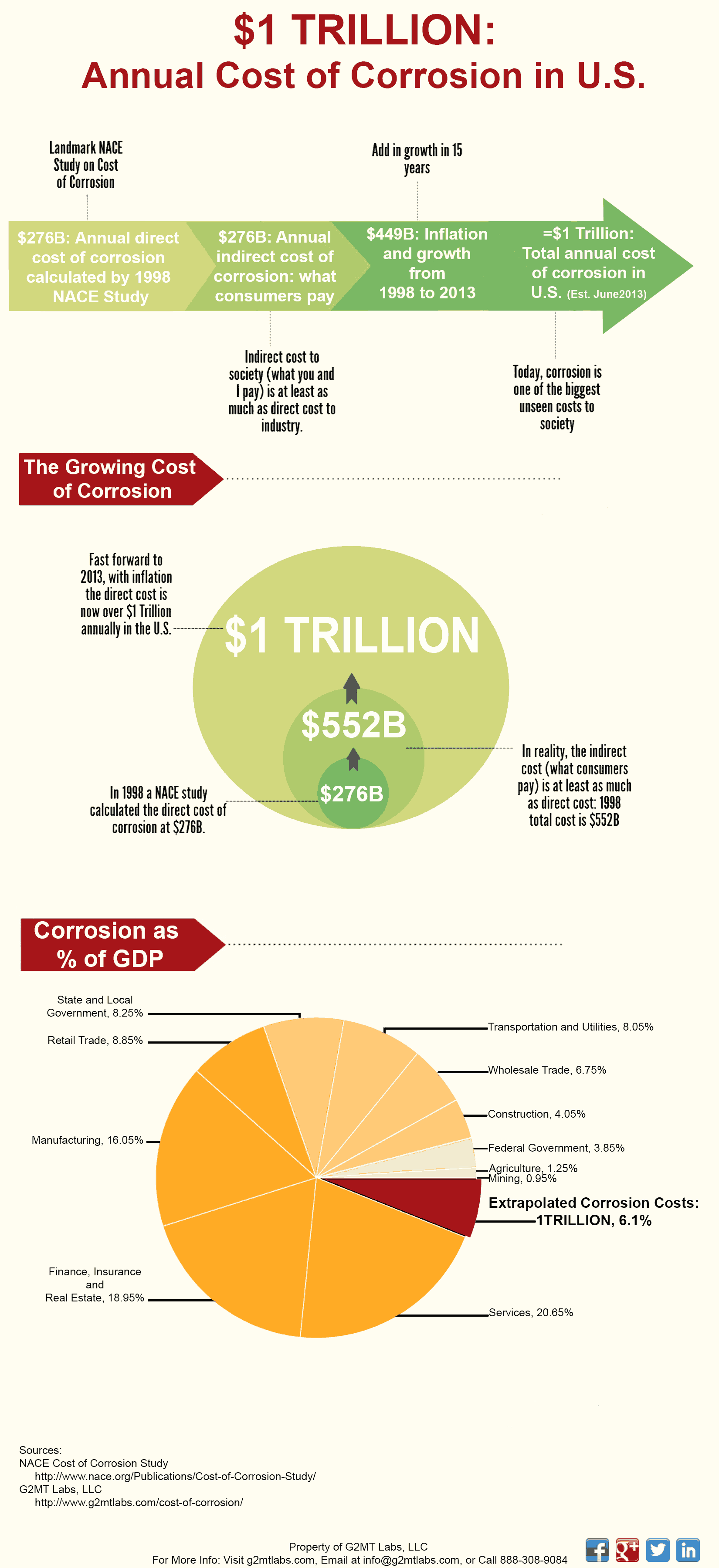CUI (Corrosion Under Insulation) has always been a challenge for plant operators, quality assurance/reliability engineers and equipment owners. It is hard to identify the problem until it has become an emergency situation, often leading to unit shut downs or even the whole facility shut down for emergency repairs.
As per industry statistics, next to leakages in flanged joints, the highest incidents of piping failure in process industry is caused due to corrosion in pipe, especially under insulation.
How CUI is Caused
An insulated piece of equipment can have trapped moisture by two means: moisture can become trapped due to cyclic equipment and condensation forming and being trapped under insulation. The second and more common reason is rain/ snow. Rainwater or water from melting snow will eventually enter weak points in the system and pour onto the surface under insulation. The difference when compared to a stack is that the water gets trapped because of the insulation and is not allowed to escape.
Thermal shock can also be a significant cause of CUI. Thermal shock is categorized by a dramatic rise or fall in the temperature of the equipment. Thermal shock may occur when a unit is turned on or off, during the normal cyclic conditions the unit may exhibit, or when the steel is exposed to water that has penetrated the jacketing.
Challenges in Inspection
CUI is difficult to find because the insulation covers the corrosion problem until it is too late. It is expensive to remove the insulation, inspect and then reinstate the insulation after inspection. Inspection of the covered areas without removing the coverings reduces the cost of carrying out an inspection. Therefore the development of non-destructive testing methods to detect corrosion in the above situations is therefore a major benefit to the industry. And same or worse is the case with erosion, especially when it happens at unexpected locations most often due to unusual operating conditions or turbulent flow in pipe lines and a variety of other reasons. And if this erosion is in an insulated line, the problem is multiplied many folds.
There are a number of methods used today to inspect for corrosion under insulation. The most common and straightforward way to inspect for corrosion under insulation is to cut plugs in the insulation that can be removed to allow for ultrasonic testing. The other commonly used methods are profile radiography, and complete insulation removal. More advanced methods now available includes real-time X-ray and low Intensity X-ray Imaging.
The Ultrasonic Thickness spot readings and profile radiography gives accurate values of remaining wall thickness but UT readings require the insulation to be removed and proper surface preparation. However, many times plugs removed for UT thickness gauging can itself be the source of moisture leakage. The main problem with this technique is that corrosion under insulation tends to be localized and unless the inspection plug is positioned in the right spot, the sites of corrosion can be missed. Radiography is time consuming and requires cordoning off the areas to be inspected. Both these techniques are reliable and economical only if you know the exact location of erosion and or corrosion, which is almost impossible.
CUI and erosion are mostly localised and often inspection results can be misleading as area as close as a few millimetres from corroded areas can be with normal thickness values.Tangential X ray, a relatively new technique shows the outer surface of the pipe but gives little information about the wall thickness or any erosion from inside.
Source:https://inspectioneering.com/







